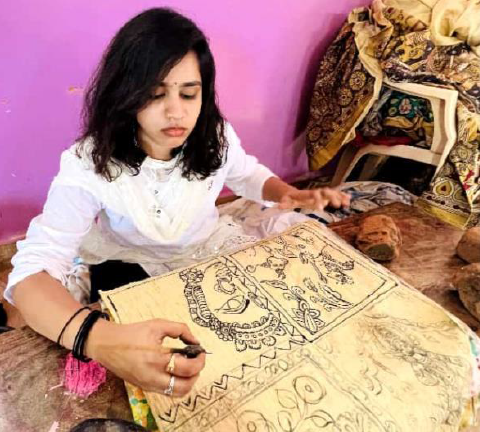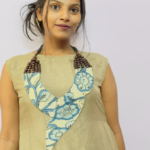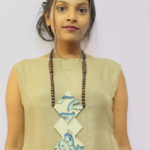
Design & Development of Fabric Jewellery using Kalamkari Art
Fashion Accessories provide interest to your outfit. Without them, the wardrobe and the outfit look incomplete. Although a fashion accessory is a secondary supplement to the user’s clothing, it is something without which the outfit will not look complete. There is often a great style in the details. Just like the fashion itself, the shapes, silhouettes and colors of the fashion accessories also change over time. Fashion accessories always range from classic to trendy which will never fade away of all the categories in fashion accessories, jewellery plays a major role in completing the look of the garment.
The word Kalamkari is derived from a Persian word where ‘kalam ‘means pen and ‘Kari‘ refers to craftsmanship. This art involves 23 tedious steps of dyeing, bleaching, hand painting, block printing, starching, cleaning and more. Motifs drawn in Kalamkari span from flowers, peacock, paisleys to divine characters of Hindu epics like Mahabharata and Ramayana. To understand and learn the art, the investigator underwent one month internship at Vishwanath kalamkari arts, Srikalahasti the place where actual kalamkari is done. In kalamkari all the colors are natural; they are extracted from the vegetables and leaves, and flowers.
Kalamkari is common on apparels and home furnishings. It is also noted that the technique is not much seen on jewellery. Keeping these reasons in mind at LISAA School of Design – Mohitha, a student of III B.Sc FAD, developed fabric jewellery using kalamkari fabric.
The objectives of the study were to visit learn, understand and explore the details of kalamkari art through internship ,to source natural coloring agents and application of kalamkari art on fabric, to design and develop fashion accessory – jewellery and to do an acceptance study in order to know the preference of the designed jewellery.
Kalamkari Methodology
Phase 1- Deals with market study in a form of observation that helps to identify and the need for the study.
Phase 2-Experimental that comprises design development of kalamkari fabric and application of the fabric on jewellery the stage also involves designing ,marking ,cutting ,construction and finishing of jewellery.
Phase3- Acceptance study in a form of survey ,which helps us to understand the preference of the designed jewellery .
The study revealed that these kinds of traditional applications on a trendy end use will definitely open up new markets that support artisans.


